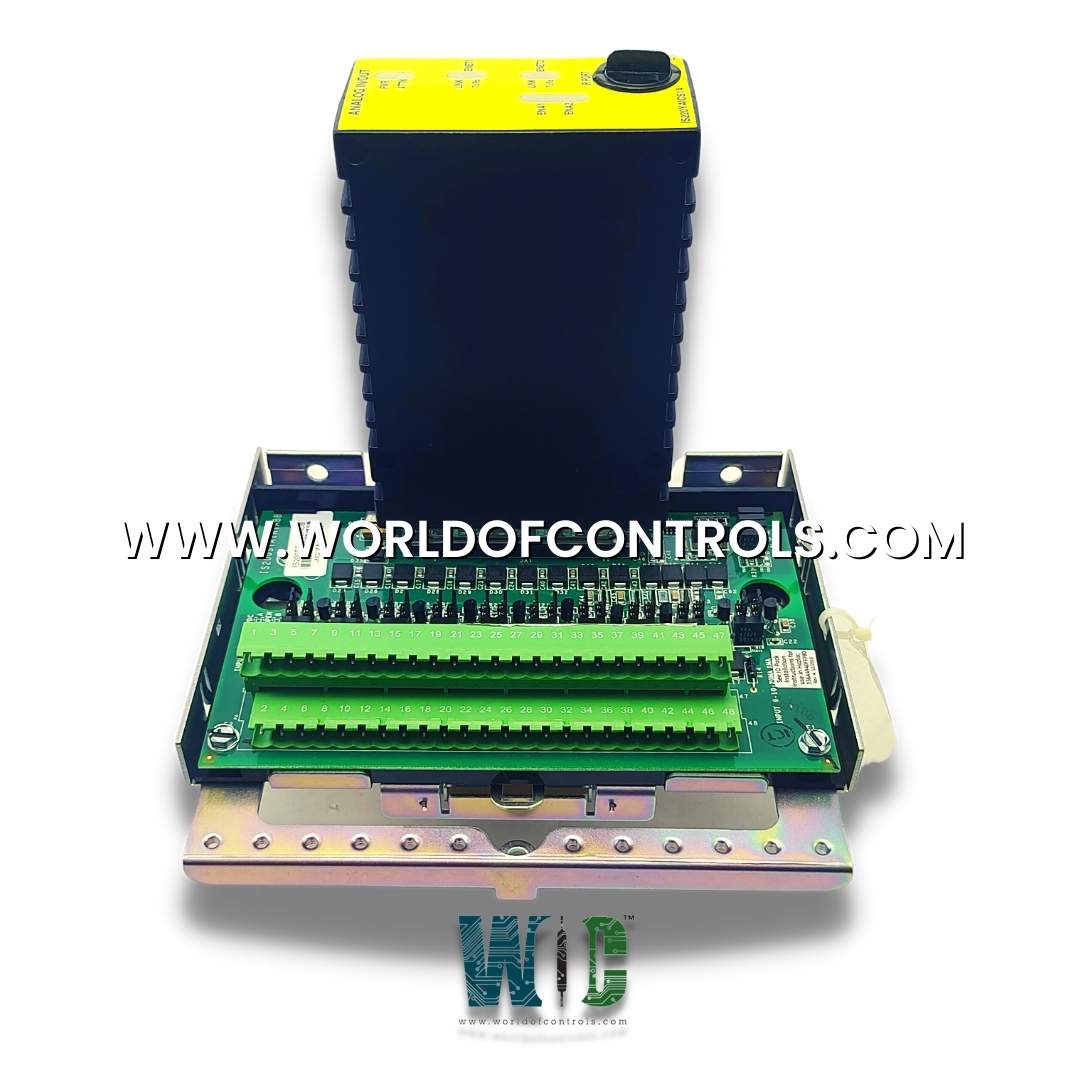
World Of Controls understands the criticality of your requirement and works towards reducing the lead time as much as possible.
IS230SAIIH2A - Simplex Analog Input Terminal Board is available in stock which ships the same day.
IS230SAIIH2A - Simplex Analog Input Terminal Board comes in UNUSED as well as REBUILT condition.
To avail our best deals for IS230SAIIH2A - Simplex Analog Input Terminal Board, contact us and we will get back to you within 24 hours.
SPECIFICATIONS:
Part Number: IS230SAIIH2A
Manufacturer: General Electric
Series: Mark VIe
Product Type: Simplex Analog Input Terminal Board
Number of channels: 12
Power supply voltage: 28 V dc
Voltage Range: 18 - 32 VDC
Maximum lead resistance: 15 Ω
Outputs: 24 V dc
Input span, transmitters: 1 - 5 V dc
Mounting: DIN-rail mounting
Isolation: 1500 V rms
Technology: Surface mount
Operating temperature: -30 to 65°C
Size: 15.9 cm high x 17.8 cm
Repair: 3-7 Day
Availability: In Stock
Country of Origin: United States
Manual: GEH-6721_Vol_II V
FUNCTIONAL DESCRIPTION:
IS230SAIIH2A is a Simplex Analog Input Terminal Board manufactured and designed by General Electric as part of the Mark VIe Series used in GE Distributed Control Systems. The Simplex Analog Input (SAII) terminal board is a compact analog input terminal board that accepts 10 analog inputs, offers two analog outputs, and connects to the PAIC. The I/O pack plugs into the D-type connector and communicates with the controller over Ethernet. The 10 analog inputs accommodate 2-wire, 3-wire, 4-wire, or externally powered transmitters. Each analog input features point isolation when configured for externally powered devices. Each analog input has an isolator in the circuit with a rating of 1500 V rms. The analog outputs are 0-20 mA but one can be jumper configured to 0-200 mA current when used with a PAICH2. High-density Euro-block type terminal blocks are used. An on-board ID chip identifies the SAII to the PAIC for system diagnostic purposes.
INSTALLATION:
The SAII plus a plastic insulator mounts on a sheet metal carrier that then mounts on a DIN rail. Optionally, the SAII plus insulator mounts on a sheet metal assembly and then bolts directly to a cabinet. There are two types of Euro-block terminal blocks available as Follows:
OPERATION:
24 V dc power is available on the terminal board for all the transmitters (transducers). There is a choice of current or voltage inputs using jumpers. One of the two analog output circuits is 4-20 mA, and the other can be jumper configured for 4-20 mA or 0-200 mA. There is only one PAIC connection, so the terminal board cannot be used for TMR applications as with TBAI.
CONFIGURATION:
Jumpers configure the terminal board. The JP1B through JP10B jumpers determine the common connection and provide ample voltage clearance to preserve the isolation voltage rating when they are removed. For convenience, the SAII board provides storage locations for jumpers that do not provide a path to the common. The jumper choices are as follows:
WOC has the largest stock of OEM replacement parts for GE Distributed Control Systems. We can also repair your faulty boards and supply unused and rebuilt boards backed up with a warranty. Our team of experts is available round the clock to support your OEM needs. Our team of experts at WOC is happy to assist you with any of your automation requirements. For pricing and availability on parts and repairs, kindly contact our team by phone or email.
What is the purpose of the Analog Input Terminal Board?
The Analog Input Terminal Board serves as an interface between analog sensors or devices and the control system. It converts the analog signals into a format that the control system can understand and process.
How many channels does the Analog Input Terminal Board have?
The number of channels can vary depending on the specific model of the Analog Input Terminal Board. Common configurations include 4, 8, or 16 channels, but there may be other options available.
What types of signals can the Analog Input Terminal Board accept?
The Analog Input Terminal Board typically accepts voltage or current signals within a specified range. It is important to check the specifications of the particular board to ensure compatibility with the signals from your sensors or devices.